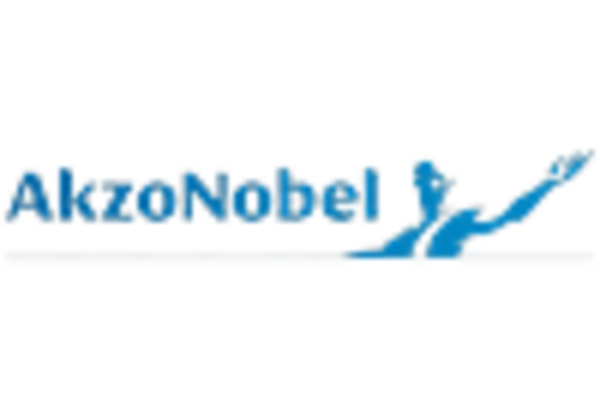Increased Industrial Applications
The Non-Ionic Surfactant Market is witnessing a surge in applications across various industrial sectors, including textiles, agriculture, and oil recovery. Non-ionic surfactants are utilized for their emulsifying and wetting properties, which enhance product performance in these industries. For instance, in textile processing, they facilitate dyeing and finishing processes, while in agriculture, they improve pesticide efficacy. The industrial segment is expected to contribute significantly to market growth, with projections indicating a potential increase in demand by 4% annually. This diversification of applications underscores the versatility and importance of non-ionic surfactants in the industry.
Growth in Household Cleaning Products
The Non-Ionic Surfactant Market is significantly influenced by the expanding household cleaning products segment. As consumers become more conscious of hygiene and cleanliness, the demand for effective cleaning agents is on the rise. Non-ionic surfactants are favored for their ability to dissolve oils and dirt without harsh effects, making them ideal for use in various cleaning formulations. Market data suggests that the household cleaning segment could grow at a CAGR of around 5% over the next few years, indicating a robust opportunity for non-ionic surfactants to capture a larger market share in this sector.
Rising Demand in Personal Care Products
The Non-Ionic Surfactant Market is experiencing a notable increase in demand driven by the personal care sector. Consumers are increasingly seeking products that are gentle on the skin and environmentally friendly. Non-ionic surfactants, known for their mildness and effectiveness, are being incorporated into shampoos, lotions, and cleansers. The personal care segment is projected to account for a substantial share of the market, with estimates suggesting it could reach approximately USD 1.5 billion by 2026. This trend indicates a shift towards formulations that prioritize safety and sustainability, thereby enhancing the appeal of non-ionic surfactants in the industry.
Regulatory Support for Eco-Friendly Products
The Non-Ionic Surfactant Market is benefiting from increasing regulatory support aimed at promoting eco-friendly products. Governments are implementing stricter regulations on chemical formulations, encouraging manufacturers to adopt sustainable practices. Non-ionic surfactants, often derived from renewable resources, align well with these regulatory trends. This shift not only enhances the marketability of products but also positions non-ionic surfactants as a preferred choice for companies looking to comply with environmental standards. As regulations continue to evolve, the industry is likely to see a further increase in demand for non-ionic surfactants that meet these criteria.
Technological Innovations in Surfactant Production
The Non-Ionic Surfactant Market is poised for growth due to ongoing technological innovations in surfactant production. Advances in manufacturing processes, such as the development of more efficient catalysts and greener synthesis methods, are enhancing the quality and reducing the environmental impact of non-ionic surfactants. These innovations not only improve product performance but also lower production costs, making non-ionic surfactants more competitive in various applications. As technology continues to evolve, it is anticipated that the market will see an influx of new and improved non-ionic surfactants, further driving industry growth.


















Leave a Comment